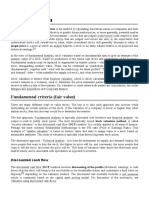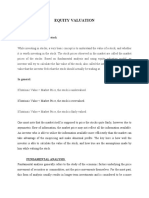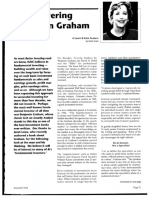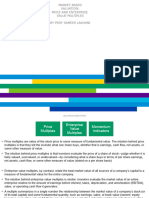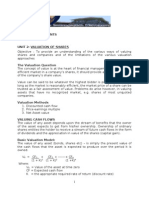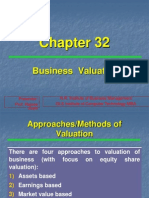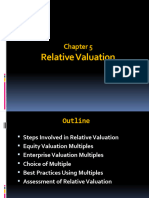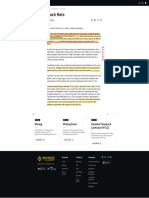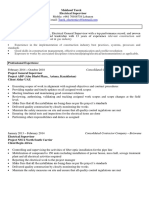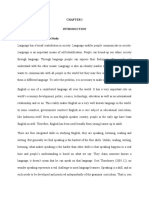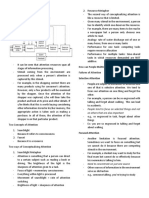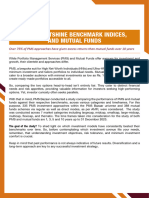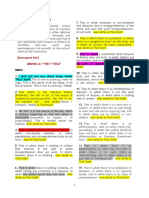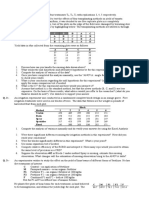EDUCATION MARKETS SIMULATOR YOUR MONEY ADVISORS ACADEMY
FUNDAMENTAL ANALYSIS TOOLS FOR FUNDAMENTAL ANALYSIS
Fundamental Graham Number
Analysis
By ADAM HAYES | Reviewed by ROGER WOHLNER | Updated May 10, 2021
TOOLS FOR FUNDAMENTAL
ANALYSIS
What Is the Graham Number?
SECTORS & INDUSTRIES The Graham number (or Benjamin Graham's number) measures a stock's
ANALYSIS
fundamental value by taking into account the company's earnings per share (EPS)
and book value per share (BVPS).
The Graham number is the upper bound of the price range that a defensive
investor should pay for the stock. According to the theory, any stock price below
the Graham number is considered undervalued and thus worth investing in.
KEY TAKEAWAYS
The Graham number is a metric to determine the highest price that an
investor should pay for a particular stock.
It was developed by legendary value investor Benjamin Graham.
The number is arrived at using a company's earnings and book value,
both on a per-share basis.
The Graham number is normalized by a factor of 22.5, to represent an
'ideal' P/E ratio of no more than 15x and a P/B of 1.5x.
The Formula for Graham's Number
22.5 × (earnings per share) × (book value per share)
Where:
Earnings per share (EPS) is calculated as a company's net profit divided by the
number of outstanding shares of its common stock.
Book value per share (BVPS) is the ratio of equity available to common
shareholders divided by the number of outstanding shares. This figure
represents the minimum value of a company's equity and measures the book
value of a firm on a per-share basis.
Understanding the Graham Number
The Graham number is named after the "father of value investing," Benjamin
Graham. It is used as a general test when trying to identify stocks that are currently
selling for a good price. The 22.5 figure is included in the calculation to account for
Graham's belief that the price-to-earnings (P/E) ratio should not be over 15x and
the price-to-book (P/B) ratio should not be over 1.5x (thus, 15 x 1.5 = 22.5).
The Graham number can thus be alternatively calculated as:
15 × 1.5 × ( shares outstanding
net income
) × ( shareholders’ equity
shares outstanding
)
Essentially, this second method of calculation is equivalent to the first,
wherein EPS = net income/shares outstanding, and book value is another term for
shareholders’ equity.
FAST FACT
Current price should not be more than 1 1/2 times the book value
last reported. However, a multiplier of earnings below 15 could
justify a correspondingly higher multiplier of assets. As a rule of
thumb, we suggest that the product of the multiplier times the ratio
of price to book value should not exceed 22.5. —Benjamin Graham,
The Intelligent Investor (Ch. 14)
Example of a Graham Number
For example, if the earning per share for a single share of company ABC is $1.50,
the book value per share is $10, the Graham number would be 18.37.
((22.5*1.5*10)= 18.37). Again, $18.37 is the maximum price an investor should pay
for a share of ABC, according to Graham. If ABC is priced at $16, it is attractive; if
priced at $19, it should be avoided.
Limitations of the Graham Number
The calculation for the Graham number does leave out many fundamental
characteristics, which are considered to comprise a good investment, such as
management quality, major shareholders, industry characteristics, and the
competitive landscape.
With regard to stocks and equity instruments, fundamental analysis is a method of
determining value that focuses on key metrics and economic indicators, such as
revenues, earnings, where an industry is in its cycle, return on equity (ROE), and
profit margins.
Fundamental analysis relies on a company’s financial statements. One of the most
famous and successful fundamental analysts, Warren Buffett—aka "the Oracle of
Omaha"—is famous for successfully employing fundamental analysis. Warren
Buffett was both a student and employee of Benjamin Graham. The fundamental
method of security analysis is considered to be the opposite of technical analysis.
Frequently Asked Questions
What is a good Graham's number?
Graham's number will always present a maximum stock price given a company's
EPS and BVPS. As a result, any stock price below that figure should signal a good
buy for a value investor.
What is the Graham number in value investing?
The Graham number takes a company's per-share metrics and normalizes it based
on a recommended upward limit for value investors of 15x P/E and 1.5x P/B.
Who was Benjamin Graham?
Benjamin Graham is one of the founding fathers of value investing, and a financial
guru to many famous value investors such as Warren Buffett. Graham's philosophy
was to closely examine a company's financial statements to identify undervalued
opportunities. His book, “The Interpretation of Financial Statements” is widely
regarded as foundational for value investing.
Related Terms
Value Investing: How to Invest Like Warren Buffett
Value investors like Warren Buffett select undervalued stocks trading at less than their
intrinsic book value that have long-term potential. more
What the Price-To-Book Ratio (P/B Ratio) Tells You?
The price-to-book ratio (P/B ratio) evaluates a firm's market value relative to its book
value. more
Net-Net
Net-net is a value investing technique developed by Benjamin Graham in which a company
is valued based solely on its net current assets. more Partner Links
Book Value
An asset's book value is equal to its carrying value on the balance sheet, and companies
calculate it by netting the asset against its accumulated depreciation. more
Benjamin Method
The investment approach that aims to follow the strategies implemented by Benjamin
Graham. more
Book Value Per Common Share
Book value per common share (BVPS) derives a company's book value on a per-share
basis. more
Related Articles
FINANCIAL RATIOS
Understand the Weaknesses of the
Price-to-Book (P/B) Ratio
FUNDAMENTAL ANALYSIS
What Does a "N/A" P/E Ratio Mean?
FINANCIAL RATIOS
Using Ratios to Determine If a Stock Is
Overvalued or Undervalued
FINANCIAL RATIOS
Can Investors Trust the P/E Ratio?
STOCK TRADING STRATEGY & EDUCATION
Digging Into Book Value
FUNDAMENTAL ANALYSIS
Analyzing Retail Stocks
About Us Terms of Use Dictionary
Editorial Policy Advertise News
Privacy Policy Contact Us Careers
TRUSTe California Privacy
Notice
# A B C D E F G H I J K L M N O P Q R S T U V W X Y Z
Investopedia is part of the Dotdash publishing family.

















